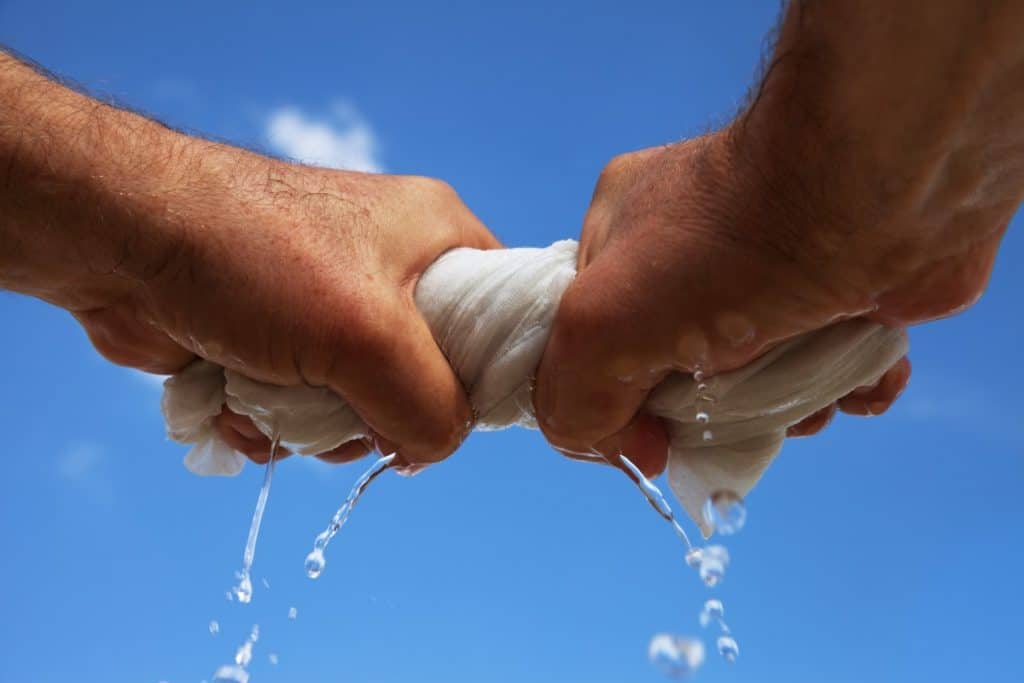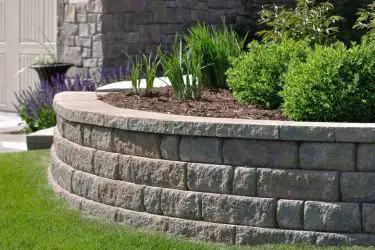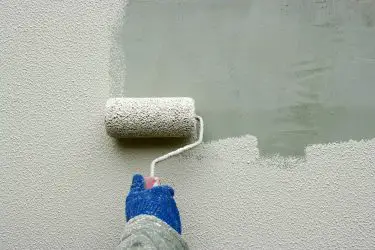So you’ve poured your concrete and now it needs time to cure. Giving your concrete enough attention during this process is vital to having a long-lasting slab.
Concrete does need to be kept wet during the curing process. While concrete is curing, it needs a sufficient amount of water for it to form chemical bonds. If it isn’t kept wet, the water in the concrete will evaporate before this process is complete.
So why does concrete need so much water? And what can you do to keep your concrete wet?

Table of Contents
Hydration
The chemical process that binds the parts of concrete together is known as hydration. This is the process that makes concrete as strong a building material as it is.
How it works is that the cement component of concrete reacts with the water to form a kind of binding paste. This paste sticks itself to the sand and the gravel that are in the concrete.
This process can take months to be fully complete, especially in colder weather. However, the most important part of the process is the very first week after the concrete is poured. During this time, the water in the concrete will start to evaporate before the process is finished.
This is why you’ll kind of have to babysit your concrete for a few days after it’s been poured. If you don’t do anything at all, the concrete will dry out before it’s done curing and you’ll be left with concrete that cracks easily and has structural weaknesses.
When To Start Treatment
Sources seem to agree that it’s important to begin treating concrete soon after it’s poured. There are some methods you wouldn’t want to use this early in the slabs lifespan, but we’ll cover that later.
For now, just remember that just about as soon as you’ve finished smoothing out your pour you should quickly spray it down with a light layer of water just to keep it from drying out, especially if it’s hot, dry, or windy outside.
Methods For Curing Concrete
There are two main methods for curing concrete: wet curing and membrane curing.
Wet curing is just about what it sounds. Any method that focuses on keeping the surface of the concrete wet throughout the process is a kind of wet curing.
Membrane curing takes a little more explaining but ultimately serves the same purpose. Essentially, membrane curing is where you put down a non-porous material like plastic to collect the water as it evaporates and re-uses it.
Some common materials for membrane curing include plastic sheets and chemical sealers.
Wet Curing
There are a few particular methods of wet curing that contractors tend to use.
- Spraying Water: This method is fairly common, and just about anyone can do it. All you need to do is spray your freshly poured concrete with water from a garden hose around ten times every day for a week. This method is simple, although it does require a fair bit of effort on your part.
- Ponding: Ponding is the practice of using soil to make a kind of pond around your concrete pour about one foot deep and filling it with water. This process takes a lot of work up front, but it only needs to be checked on once a day and all you’ll need to do is keep it full.
- Wet Covering: Wet covering is only usually done once the concrete is hard enough that it’s unlikely to sustain damage. It is done by covering the concrete with sand, hay, burlap, or another substance that can hold water well and then getting that substance wet. Like with spraying, this method can be fairly labor-intensive.
Membrane Curing
While membrane curing is usually a lot less work than wet curing, it doesn’t tend to work as well in especially hot or dry environments. However, if it isn’t too hot outside and you won’t be around to babysit your pour these methods might be perfect for you!
- Plastic Sheeting: Plastic sheeting should be done as soon as possible without damaging the concrete. It involves laying down a layer of plastic over all the exposed parts of a pour. The edges of the sheet should extend past the edge of the pour by approximately double the slab’s thickness.
- Spray-on Curing Compound: A curing compound is usually applied as soon as the concrete is hard but while the concrete still contains water. This is probably the most common method for curing concrete.
Are There Any Times I Shouldn’t Be Curing My Concrete?

When it gets below 50 degrees Fahrenheit, the hydration process will slow down and come to a stop. If you expect the weather to get colder than that, it’s a good idea to postpone your project for later.
If you do need to pour your concrete when it’s going to get cold, or it gets cold unexpectedly, you’ll either need to find some way to warm your concrete up or just wait extra long for curing to happen once the temperature has warmed back up.
When it’s cold, there isn’t any need to keep your concrete wet since it isn’t curing. In fact, doing so could end up damaging it a lot of the time.
Will Heat Make Curing Faster?
Yes, a little bit. As long as you’re keeping your concrete wet, the curing process will usually take about a week before it doesn’t need your help anymore. If it’s especially hot, that time can drop down to three or four days.
The trade-off is that you may not be able to use membrane curing, since water will be evaporating much faster than usual. Instead, you’ll have to use one of the wet curing methods listed earlier in this article.
The key rule is to plan ahead. Keep an eye on the weather so that you know how long you’ll concrete will take to cure. Know how you plan to cure it before you start. In no time at all your concrete will be ready to use and as strong as ever.




